NEWSLETTER
BE FIRST IN LINE FOR OUR NEXT RELEASE.
© 2025 TIPSTER. ALL RIGHTS RESERVED.
NEWSLETTER
BE FIRST IN LINE FOR OUR NEXT RELEASE.
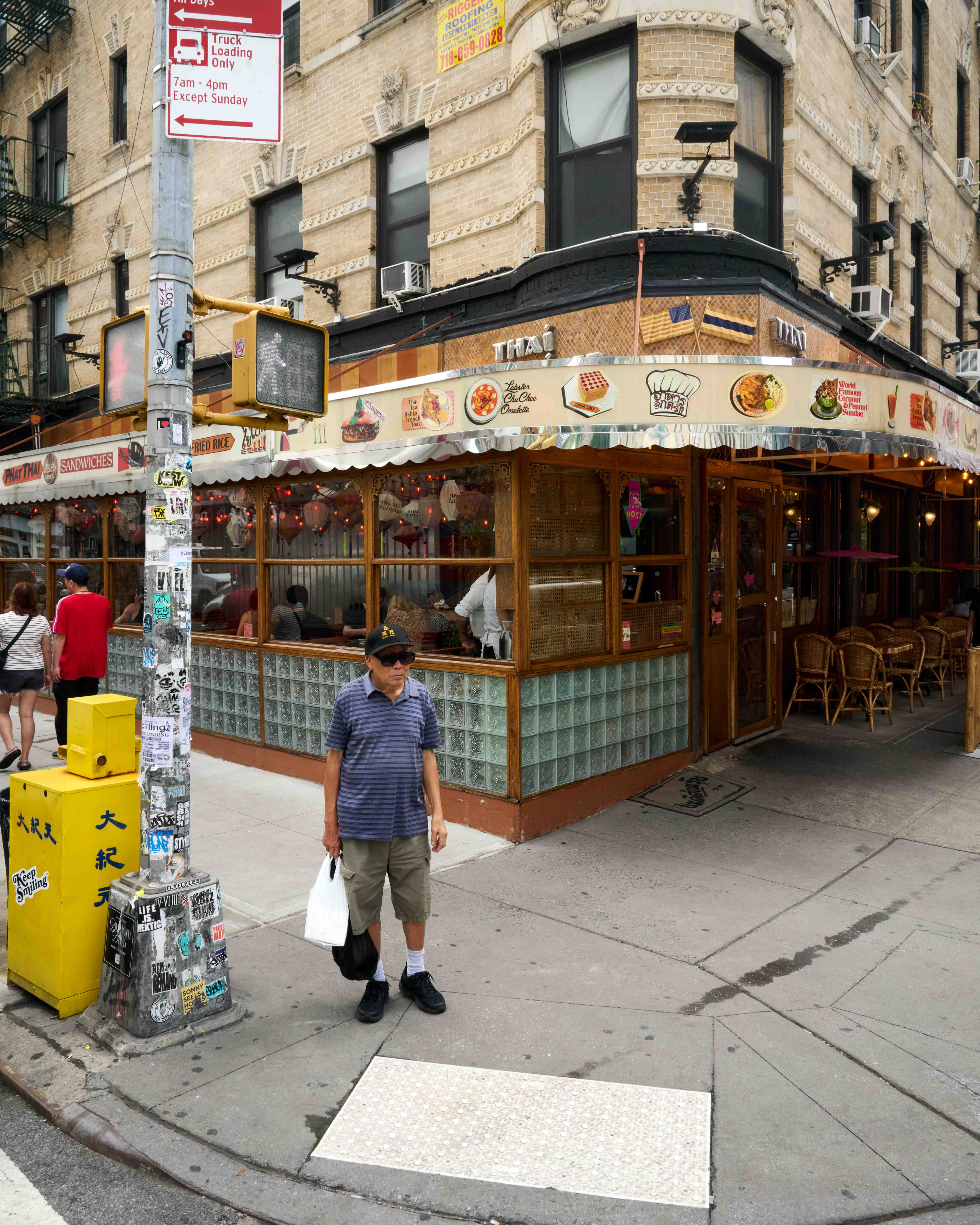

Words by Marcelo Jaimes Lukes
Photography by Sacha Maric
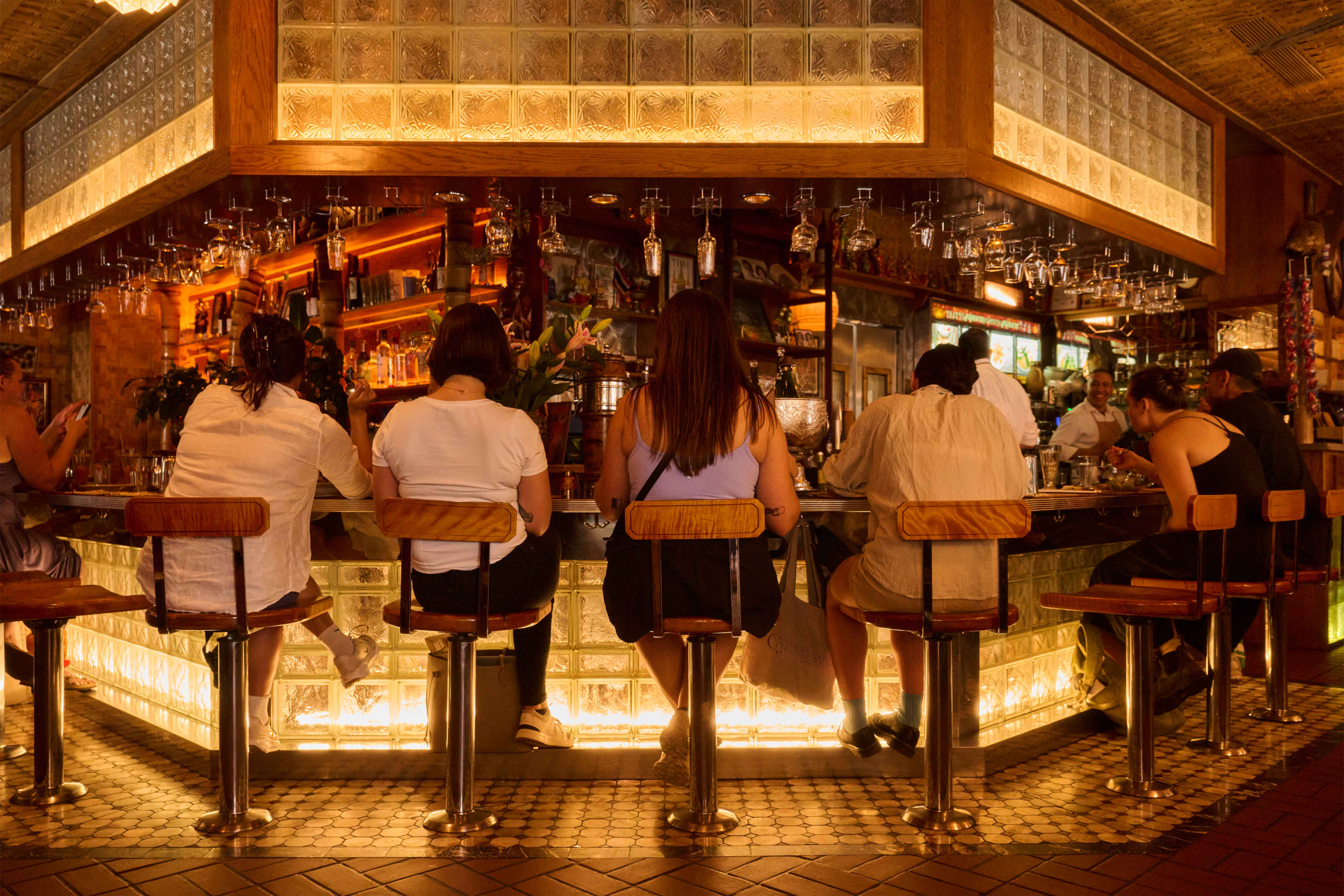
I had FOMO five years ago. Over the course of a week, it seemed that everyone I trusted for restaurant recommendations had been to Thai Diner. Friends were extolling the virtues of the crab fried rice. Former colleagues insisted that the buttery roti breakfast sandwich, layered with aromatic sausage, Thai basil, and mayonnaise, was as close to godliness as one could get in Manhattan. I hadn’t been. Then, the city shut down. I didn’t get my chance to ascend to fish sauce nirvana.
Fortunately, the colorful awning on the corner of Kenmare and Mott is as campy as ever. Since opening in February 2020, Thai Diner has commanded as much praise as any restaurant in the city. Its success shouldn’t come as a surprise. The restaurant is helmed by chef power couple Ann Redding and Matt Danzer, of Uncle Boon’s fame, and is is the sort of uniquely New York haunt that dazzles with depth of flavor, eclectic decor, and effortless cool. Now, with a another spot open just down the street—a chicken-finger joint named Mommy Pai’s—the chefs are expanding their empire.
On a humid summer morning, I sat down with chef Ann, whose early life in Thailand set the foundation for the restaurant’s vibrant flavors. An alum of some of the country’s most respected kitchens, including Per Se, where she met her husband and business partner, she’s as committed as ever to delivering an exceptional culinary experience.
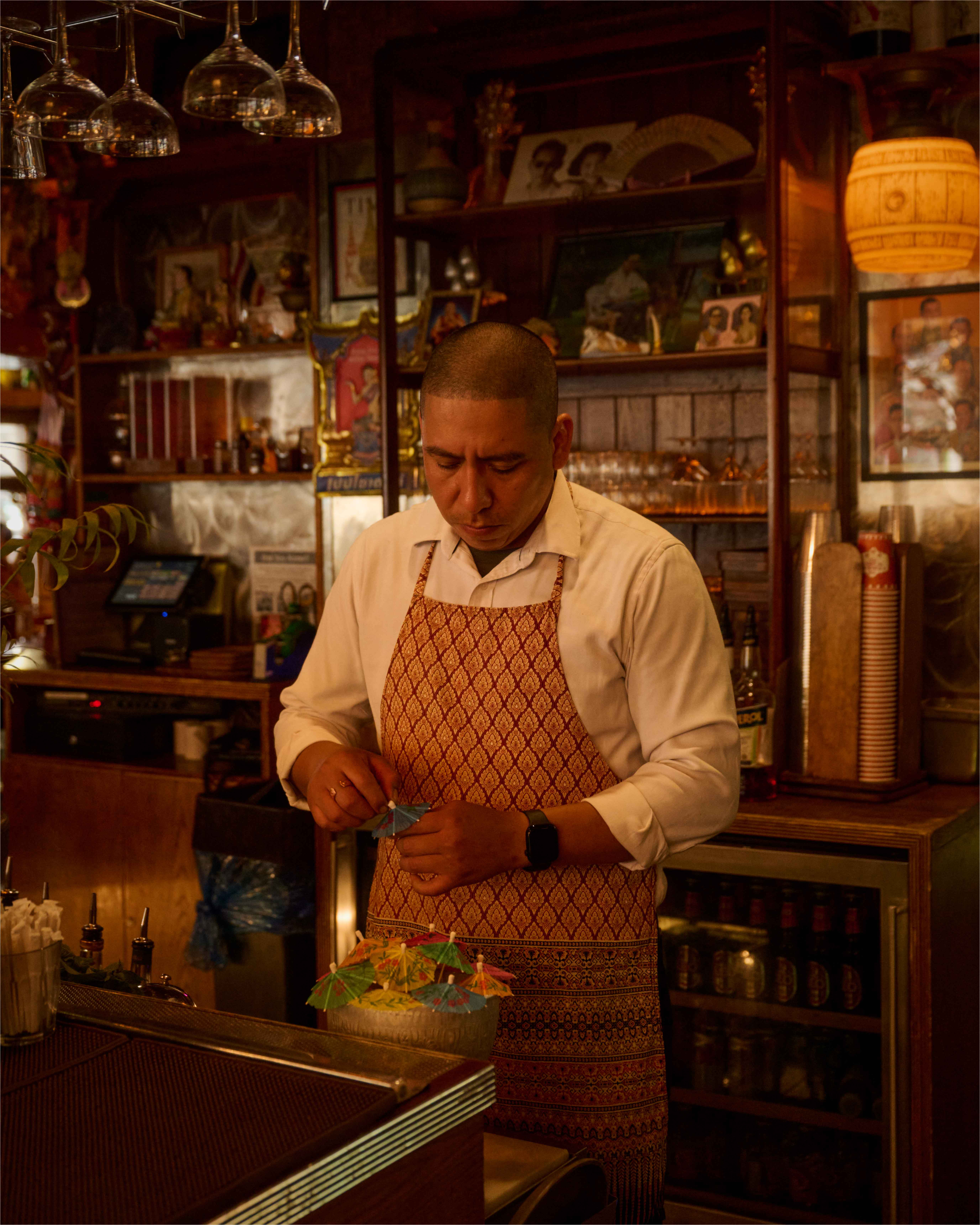

MARCELO JAIMES LUKES: I just walked here from the Delancey St. F stop. Just 10 years ago, it would have been nothing like my walk just now. What’s changing around here?
ANN REDDING: So much. When we first started looking for spaces, before opening Uncle Boon’s in 2013, it was quite different. This was a hardware store for 30 years. Down the block, there was a Chinese lobster restaurant. I’m pretty sure there was a gambling operation going on in the basement.
We get a fantastic mix of people, because we’re at the intersection of so many amazing neighborhoods. Chinatown, SoHo, the Bowery. It’s very lively. We thought we were taking a risk when we originally opened up here. Now, it seems like the center of so much.
MJL: Let's talk about you. You spent the early years of your life in Thailand—
AR: Yeah, I was born in Ubon, Thailand, in the Northeast near the border with Laos. But yes, I spent my younger years there.
MJL: What role did food play in those early years up in Thailand?
AR: It was everything. My grandmother had a vegetable farm, and that's how she supported the family. When I was a kid, I would go to the market with her, and we’d have a mat on the floor and she’d lay her veggies out. I have so many memories of sitting with her on the mat. The woman across from her sold Khao Chae, a chilled rice dish with jasmine. There was this thing nearby that was always smoking. I remember asking my grandmother, “What is that?” And she smiled and said, “Oh, they’re cremating people.” (Laughs)
Then we moved to the Philippines for six years for my dad’s work, which was helping refugees. We were around different refugee camps. There were Vietnamese, Cambodians, Hmong. Honestly, it was a very cool upbringing.
MJL: Are there particular flavor memories from early on that you're trying to recall with the food you’re making now?
AR: I think I’m always thinking about the clarity and the simplicity of the flavors of my childhood, like lemongrass. When we were in the Philippines, my mom grew lemongrass around the house to keep out the snakes. My sister and I would make these stews in these clay pots with lemongrass and whatever we could find. I’m not going to lie, I might have thrown in a couple of caterpillars, too. It was my experimentation phase, you know?
When I think of Thai Diner, I know that it’s about basing flavors off what I’ve had before—no caterpillars, though! It’s not supposed to be “authentic”, whatever that means. I’m working from my flavor memory. I’m thinking specifically of a Thai dish and that flavor profile. And then I’ll play around with it and deconstruct the ingredients and present it differently. But the whole time I’m trying to keep the flavors pure and delicious.
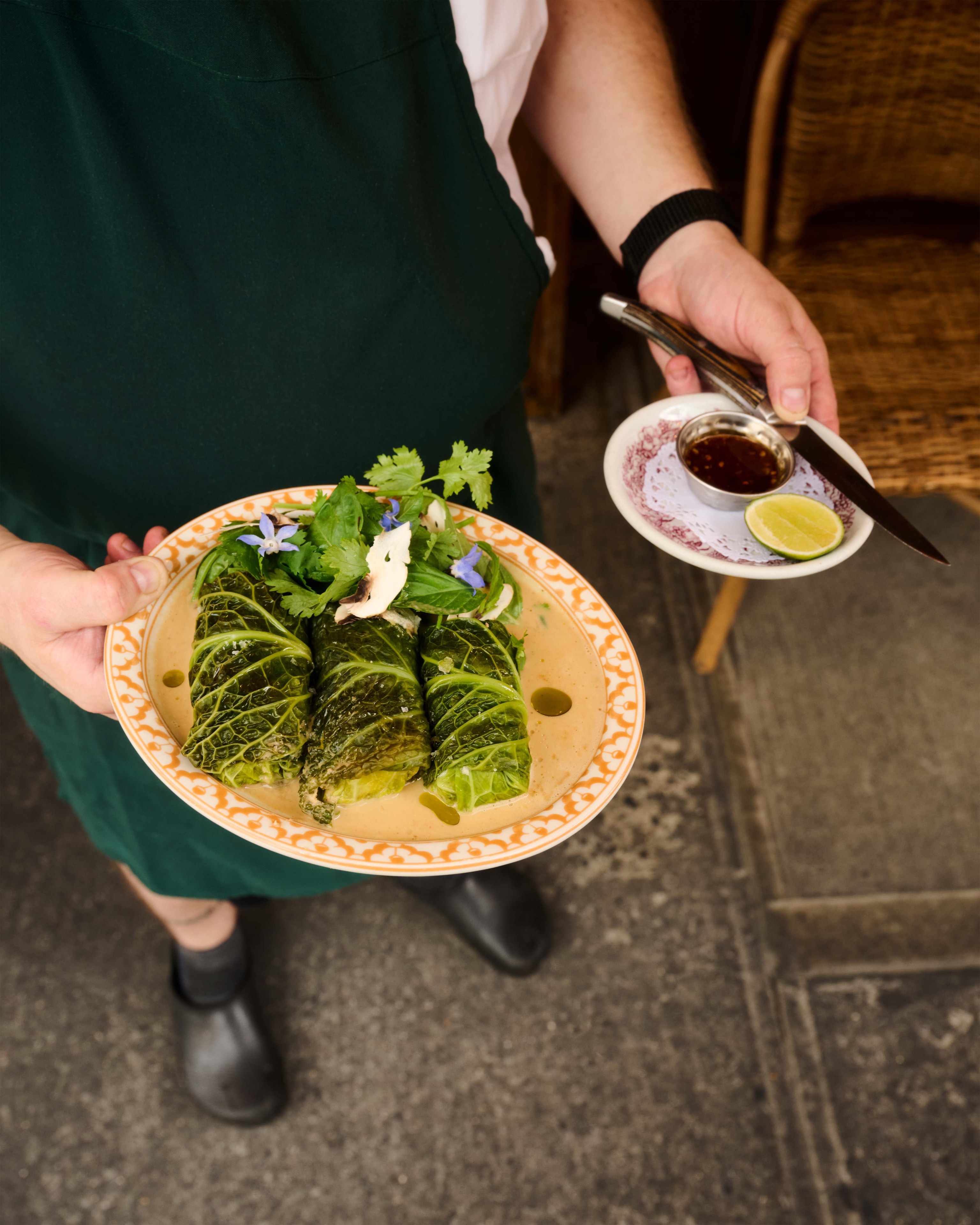
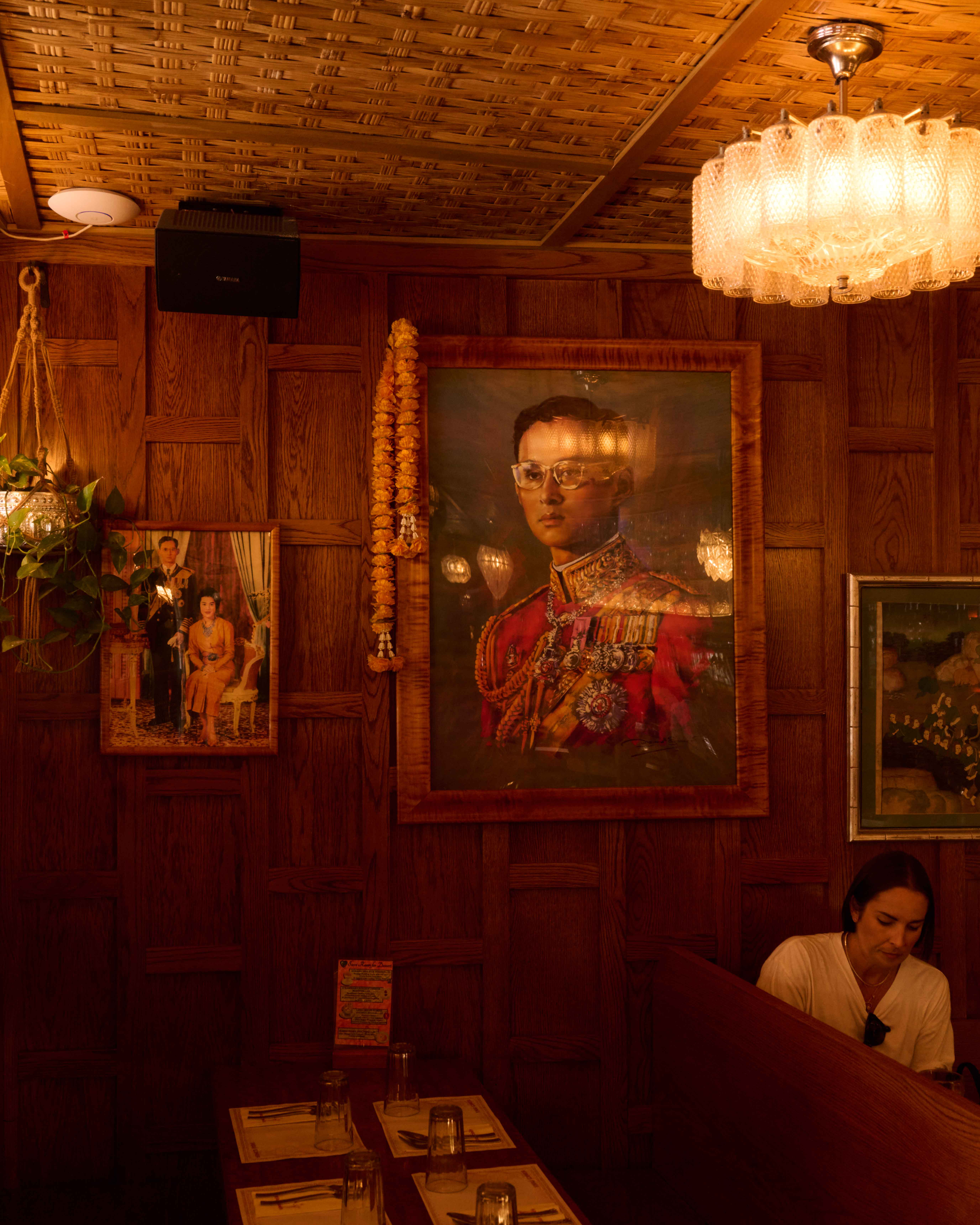
MJL: How did you begin your journey working in some of the most respected kitchens in New York?
AR: That was an interesting and rocky road. I went to college for a year—that didn't work out. I wasn’t meant to be a student. I got academically dismissed, and my mom still doesn’t know. Don’t tell her.
But yeah, I was a college dropout. I worked some jobs in malls, then I worked in a hair salon, and then I decided I needed a real adult job. I moved up to New York in 1999, and my sister was living here in Alphabet City at the time. So I moved into a studio with her and her friend Josie. I was 28.
MJL: All three of you in one studio?
AR: Yes. (Laughs) There were a bunch of years when I was just meandering around. I worked in PR for a month. Clearly, that wasn’t for me. And then I fell into waitressing at nightclubs.
At the time, the Food Network had just come out, and I remember watching it and taking it very seriously—like writing down recipes from Emeril Lagasse.
At one point, I was talking to my dad, and he was like, “Why don't you go be a chef?” It hadn’t occurred to me before. But it was clearly something I was really into.
So I enrolled in Peter Kump—now the Institute for Culinary Education—in their work study program. You work for them for a year and then you can get a free education.
A couple of months in, I realized that I couldn’t do that. I didn’t have time for that. I was like, “This is going to take too long.” I started cocktail waitressing, and I made more in one night than I ever made before. I used that to pay for culinary school. When I started working in kitchens, I was making $8 an hour. I was broke, eating spam on the stoop in the East Village, drinking Kool-Aid.
But I really liked it. And I stuck with it.
MJL: When did those early roles transition into positions working for some of the country’s most respected chefs? When did you realize you had real talent?
AR: I’ve always had a good work ethic—and I’ve always been a people pleaser! And when you’re in kitchens and earnest, your bosses want you to do a good job and to do well.
At the time, I was one of the few female cooks in the kitchen. I guess people weren’t threatened by me because I was a woman, and they took me under their wing and taught me a lot of things. I approached it with sincere interest, and the chefs I worked with started fanning the flame.
Anyway, I remember working at a restaurant called Public. I was actually waitressing and cooking. I would work the brunch service as a waitress, and then change into my jacket and work as a line cook at night.
One day, my friend and mentor Chris L’Hommedieu called me and asked, “What are you doing tomorrow?” And I was like, “I don't know.” And he said, “You're coming to Per Se, to trail.”
Honestly, at the time, I barely knew what a tasting menu was. But they were looking for people who could listen and execute their way.
"Authentic means authentic—it doesn’t mean good. For some reason, people use those terms interchangeably a lot. They’re not the same. People have come in and said, 'Hmmm… interesting, but this isn’t authentic.' And I’m like 'No, shit. It says Thai Diner.'"
MJL: There’s a reputation of intensity in the Keller kitchens—
AR: I loved it. Honestly, I loved it. I didn’t get fazed. All of the things, all of the antics. I thrived in that moment. It was a good time. And that’s where I met Matt, my husband.
MJL: Did the discipline of working in those kitchens set the stage for what you built with Thai Diner?
AR: Absolutely. I owe it all to that experience. Of course, what we’ve opened is completely different from fine dining, but we definitely have brought in some of that mindset. How can we do this more efficiently? How can we make as few movements as possible? When you spend enough time in those kitchens, it becomes built in, and that’s your normal, and you’re stuck with that mindset.
The biggest thing that we took from Per Se is consistency. Of course, sometimes you’re going to screw up. You’re working with people, and people have bad days. But you have to try to be consistent.
MJL: You mentioned your distaste for the idea of “authentic food.” Some people’s exposure to Thai cuisine is limited to pad thai and papaya salad. Are you trying to teach people about Thai cuisine, without using the term “authentic”?
AR: I’m not a historian, nor am I super educated about Thai cuisine. I don't study it. I grew up eating it. I love the food. I'm making it the way that I want to make it, and I get really annoyed when people become obsessed with that word: authentic.
Authentic means authentic—it doesn’t mean good. For some reason, people use those terms interchangeably a lot. They’re not the same. People have come in and said, “Hmmm… interesting, but this isn’t authentic.” And I’m like “No, shit. It says Thai Diner.”
If you go to Thailand, it’s a freaking melting pot. Thai people are taking liberties with food and doing whatever. It’s creative. When people talk about authenticity, I ask, “Do you like how it tastes?” If you don’t like it, that’s fair. I appreciate the feedback.
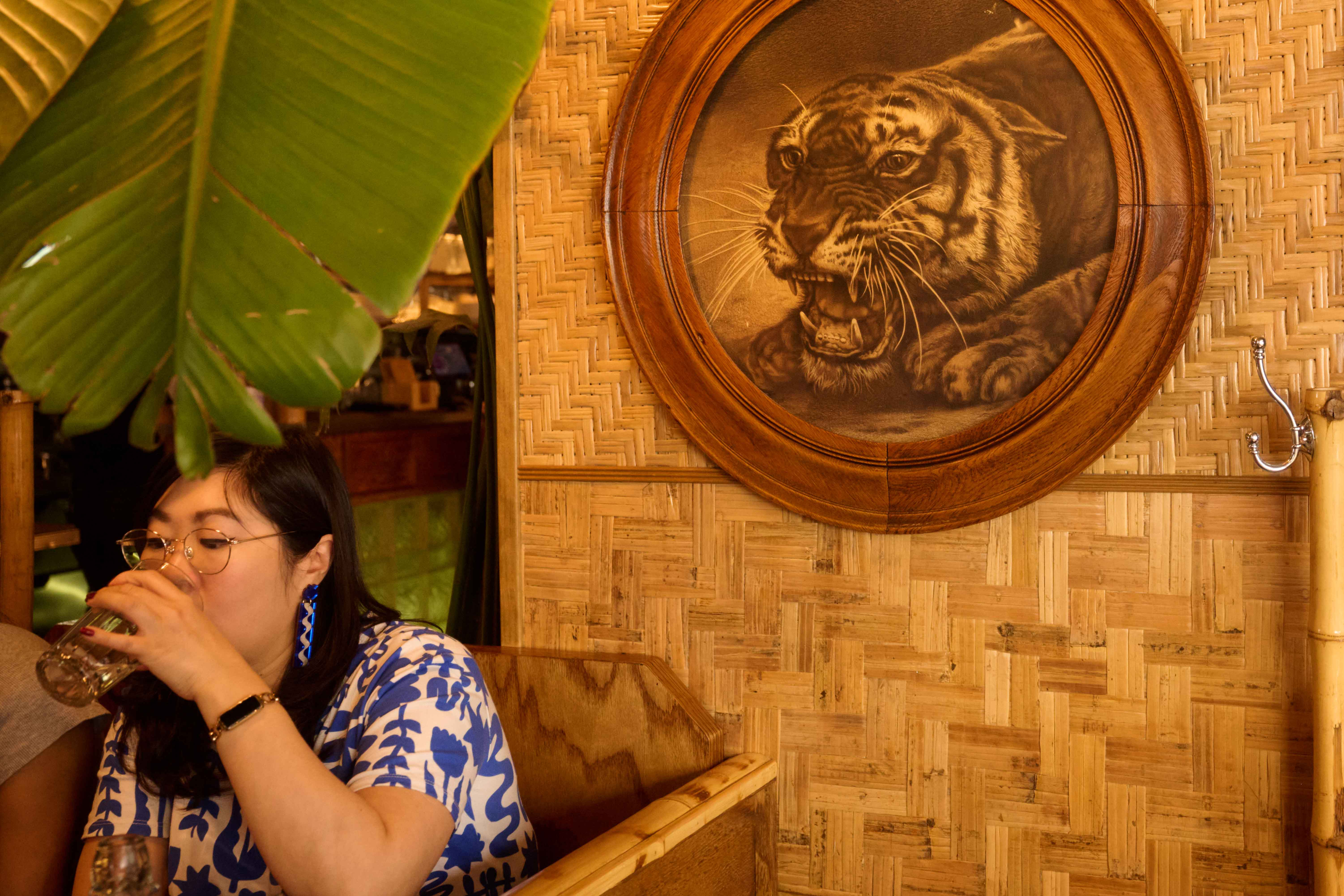
MJL: Were you surprised when Thai Diner received such acclaim?
AR: I don't know. I think back to those early days, and it was really such a blur. Sometimes you can feel a bit clueless. That’s the thing with restaurants, there’s an X-factor sometimes that you just can’t control.
But we’re trying to make food that’s vibrant and eclectic, and also not thinking too much about trends, you know? I mean, I remember back in the day when I was cooking and it was all about beer, pork, and bourbon.
MJL: I like to call that the Mumford and Sons era.
AR: I love that. Yes, it was like the Mumford and Sons era. Yeah, exactly. Like trucker hats and curly mustaches and bacon on everything. It's funny, like, watching the different food trends, and now I feel like, okay, some of those trends are starting to come back now.
MJL: Do you try to adapt your menu to trends—things that you’re seeing going on in New York?
AR: I try to. I really do try to. I’ve seen some examples of chefs that I admired when I was coming up that didn’t last because they didn’t adapt.
That’s always been important to me: you can’t get stuck in your own perspective. I try not to be that grumpy old man resistant to change. I even had my first conversation with ChatGPT the other day. That’s to say, I try to stay relevant.
MJL: Is there a place that has endured that you still go to?
AR: I'm a big fan of Gray’s Papaya.
MJL: I can’t say I’ve ever heard that before. What do you like about it?
AR: Maybe I should stop there. No, it’s just a salty snack and a sweet drink. It's just like such a great little package. I was just there the other day. It is what it is.
MJL: Do you think there’s interest in the city in those more casual concepts, like your new pot Mommy Pai’s, like—I don’t want to compare your new concept to Gray’s Papaya.
AR: Absolutely. And personally, I like casual places that give good value. It is becoming really hard, I think, to offer that.
Even the neighborhood restaurant is expensive now. Matt and I had a meeting last night, and we went to grab a bite afterwards, and we’re looking at entrees in the $30 to $60 range.
A lot of the time, people judge things without knowing why that number is there. My mother is a prime example. When I go out to eat with her, I hide the menu. She’ll be like, “I can make that at home for $10 and eat it for two weeks.” And I’ll try to explain, yeah, but the restaurant is paying for rent, insurance, and the fridge that keeps breaking.
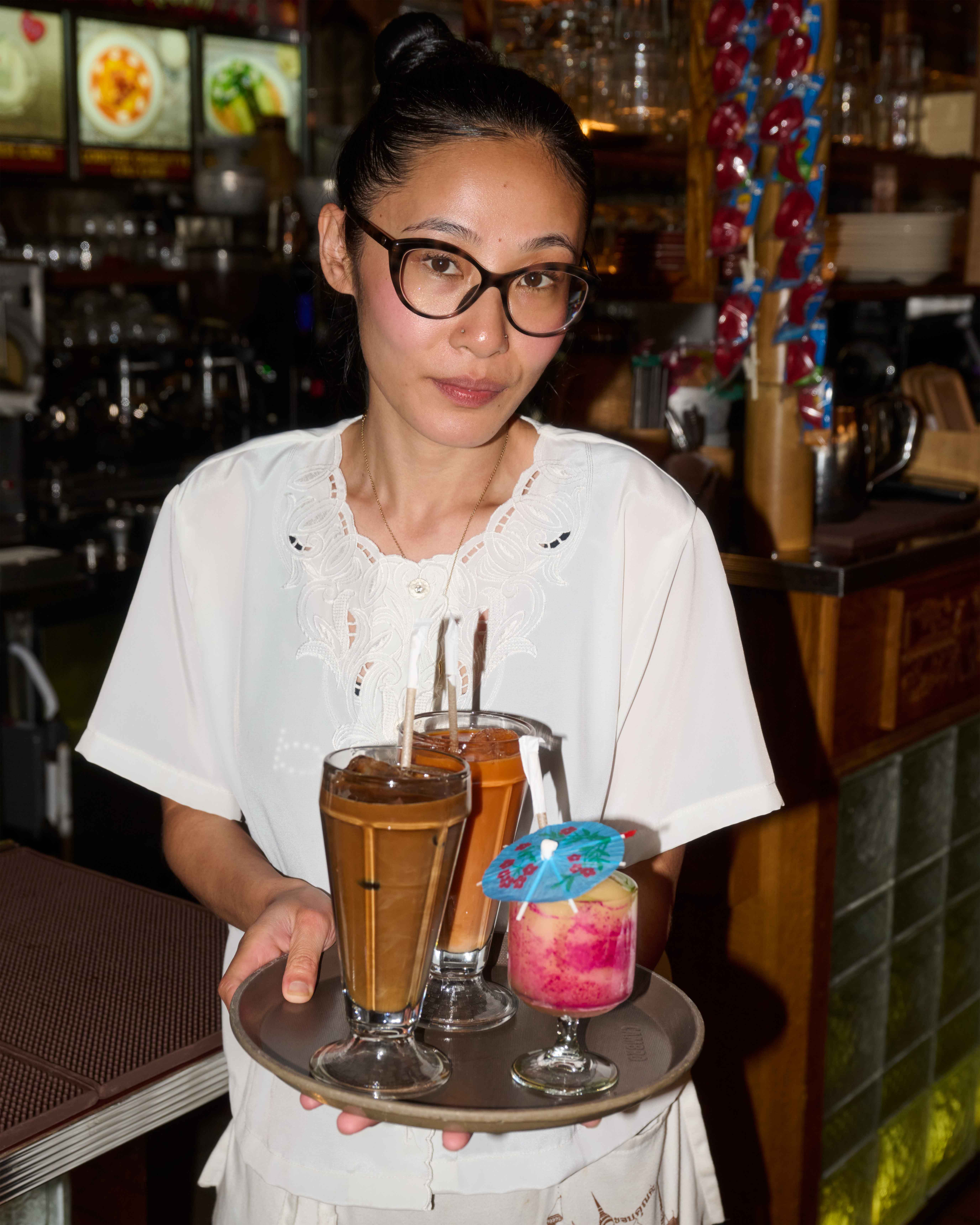
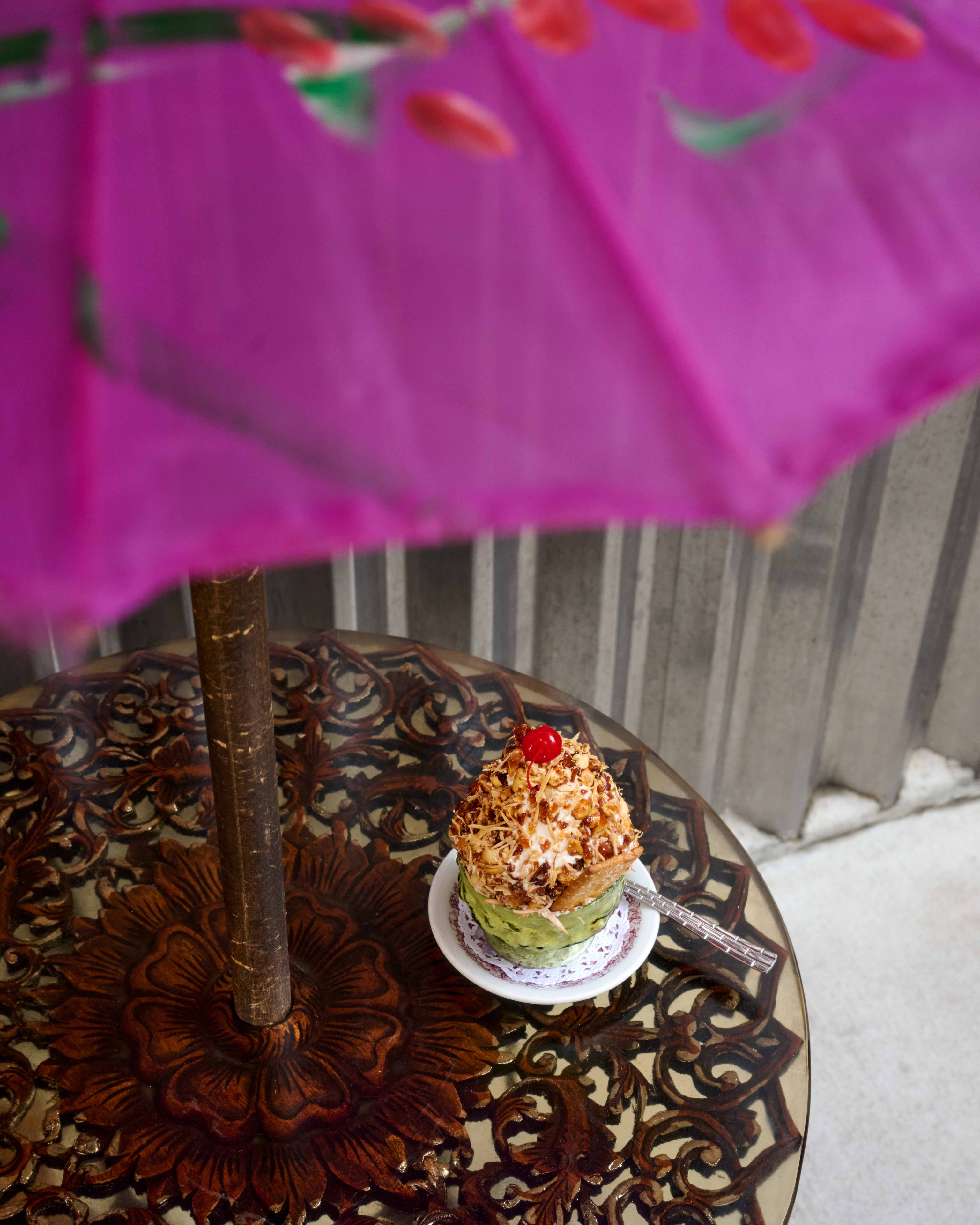
MJL: Let’s talk about the design of Thai Diner—it’s unlike any other space in Manhattan. It almost has a… tiki feel. How did you design it?
AR: It’s the brainchild of my sister, May. We wanted to base it on the vibe of the 70s and our memories growing up in Thailand. The design process was very organic, like sisters bickering and whatnot. But she has a vision. She helped design Mommy Pai’s, too.
We didn’t want to feel too polished. But there’s so much good design in New York restaurants right now. I feel like in the last 10 years, all of a sudden, everywhere is gorgeous. But sometimes restaurants are both stunning and soulless.
The most important thing for me is for it to feel lived in and not perfect.
MJL: Looking back at your years in the industry, do you have any advice for young chefs who want to open their own spot?
AR: If you have your own voice and put forward a good product, you’ll do fine. I think the hard part is doing business in the city. Yes, it's expensive. It's not forgiving. I think my biggest piece of advice is to adapt and adapt quickly. Don't be so stuck in your ways and don't, like, have this ego. Of course, you want to be firm and stand up for what you believe in. But you have to listen to people, and listen to your guests.
Never stop tweaking. Never stop trying to fix. I'm still looking at dishes we've had for 15 years, and asking, “Can we do better?” My advice is always to keep going at it.
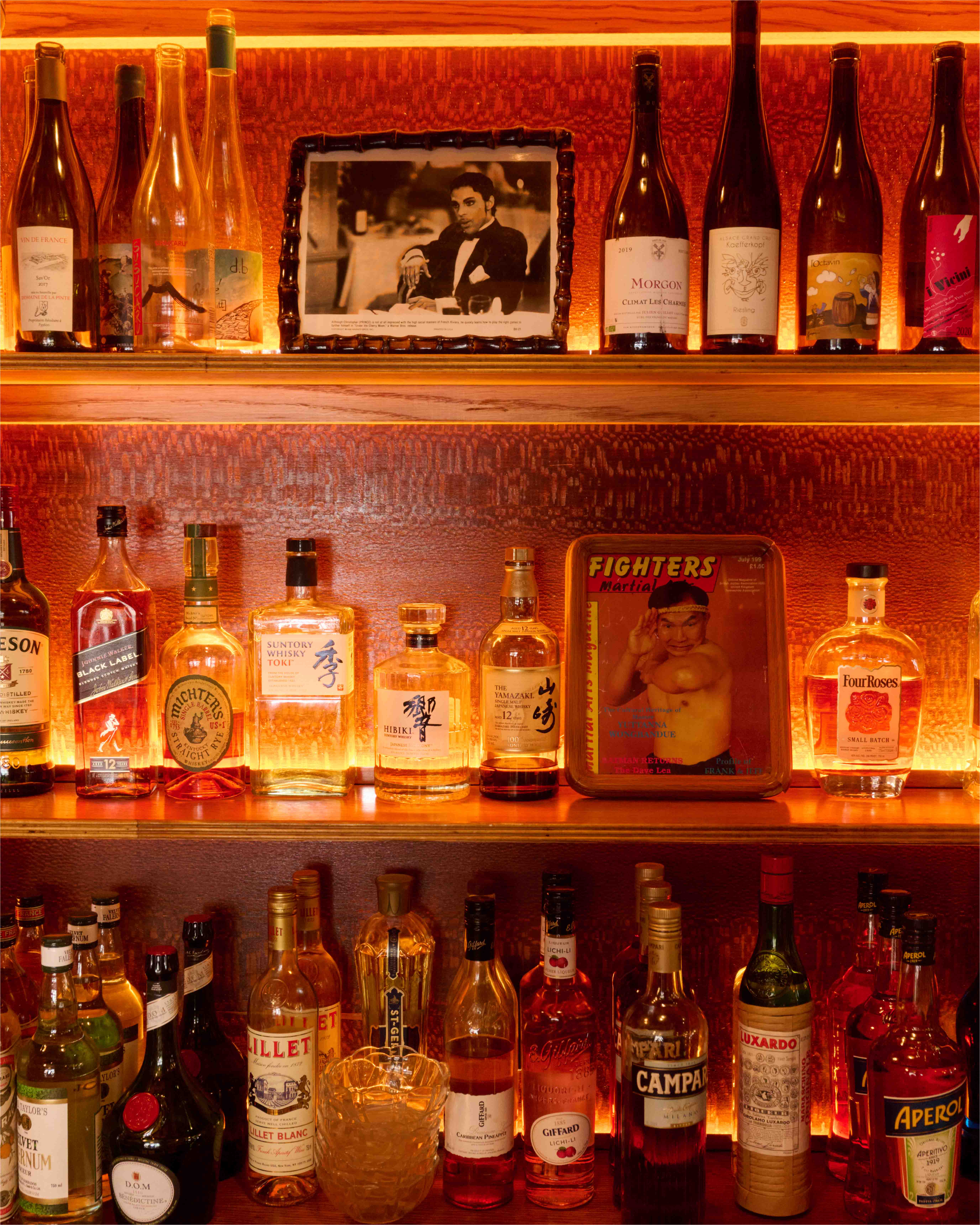

THAI DINER
186 Mott St
New York, NY 10012